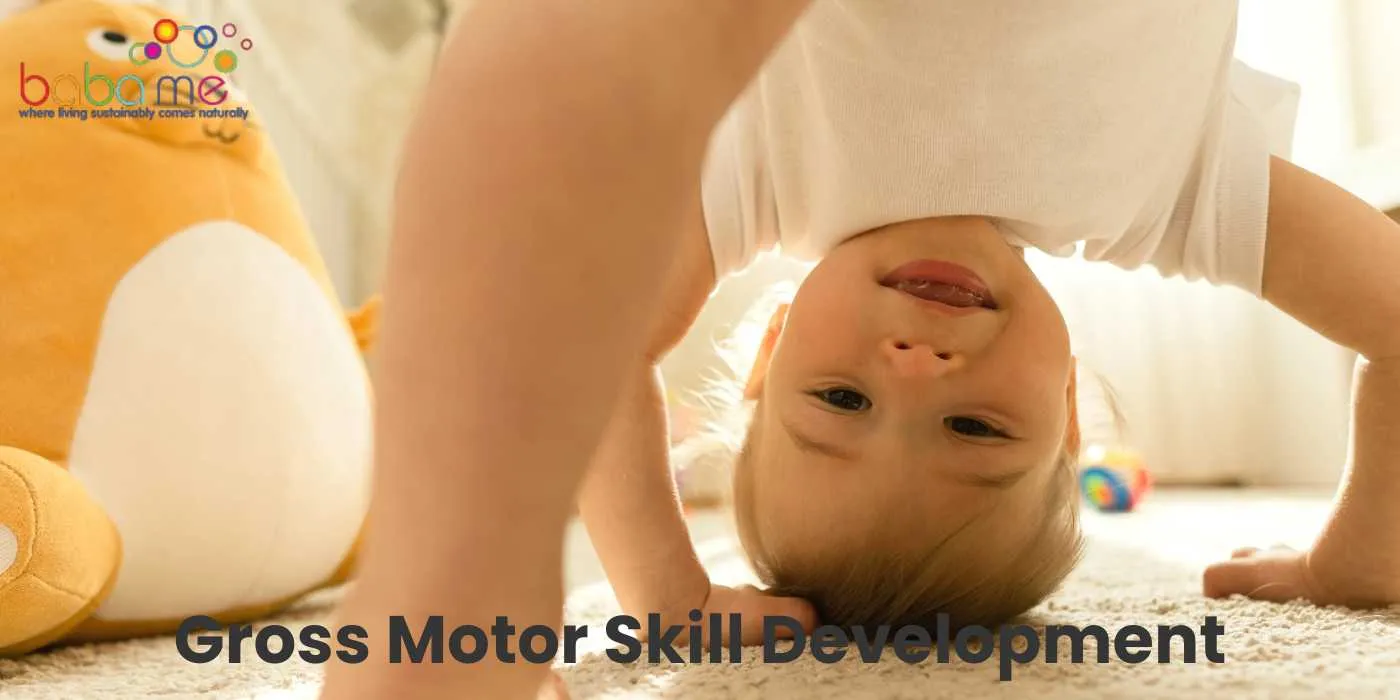Every milestone in our physical journey, from infancy to adulthood, hinges on the evolution of our gross motor skills. These foundational abilities, encompassing everything from basic body movements to complex physical activities, play a pivotal role in our daily lives.
This article explores the intricacies of gross motor skill development, shedding light on its importance, the milestones at various stages, and ways to nurture and enhance these skills in children and beyond.
Dive in and discover the magic behind every move we make.
Key Takeaways:
Gross motor skills are related to the movement and coordination of the large muscles in the body.
Parents and caregivers should monitor a child’s progress in gross motor skills development to ensure that they are meeting the appropriate milestones.
Gross motor skills development happens in different stages, and children develop at different rates.

What Are Gross Motor Skills?
Gross motor skills refer to the ability to use large muscles in the body to perform activities such as running, jumping, and climbing. These skills are essential for everyday tasks such as walking, sitting upright, and even writing. Developing gross motor skills is a crucial part of a child’s growth and development.
Motor skills are the ability to coordinate movements of the body, and gross motor skills are those that involve large muscle groups. Gross motor skills are important for children to develop because they help with body awareness, motor learning, and overall physical development.
Body awareness is the ability to understand where your body is in space and how it moves. Developing gross motor skills can help children improve their body awareness and learn how to control their movements. This can lead to improved balance, coordination, and posture.
Motor learning is the process of acquiring new skills and improving existing ones. Through gross motor skill development, children can learn how to perform new movements and improve their existing ones. This can help them become more confident in their physical abilities and more willing to try new things.
Gross motor skill development typically follows a timeline, with certain skills being acquired at specific ages. For example, a baby needs to be able to lift their head and chest when lying on their belly before they can learn to crawl. By around 18 months, most children can walk independently. By age 5, most children can run, jump, and climb with ease.
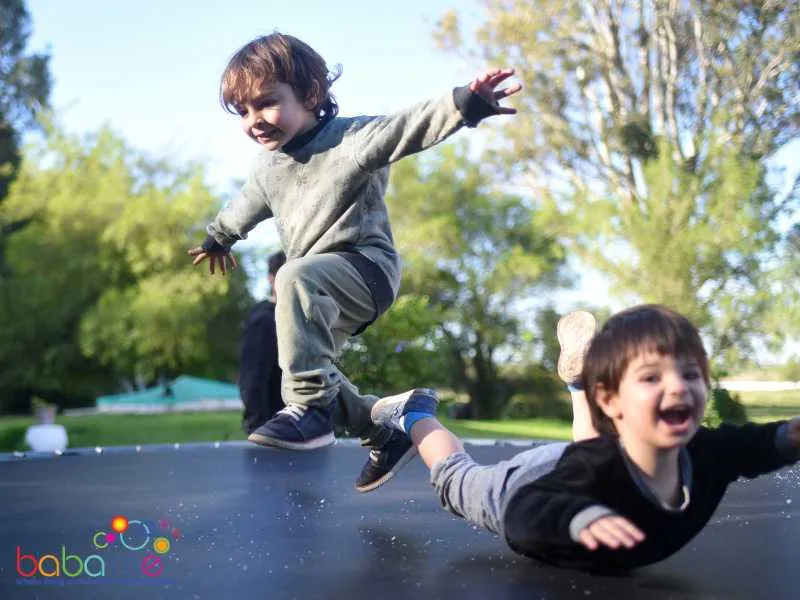
The Role of Muscles in Gross Motor Skills
When it comes to gross motor skills, your muscles play a vital role in enabling you to perform physical activities that involve large movements of your body. Large muscles in your arms, legs, torso, and chest work together to allow you to walk, run, jump, throw, and lift objects.
Your core muscles, which include the muscles in your abdomen and back, are particularly important for maintaining balance and stability during physical activities. These muscles help you to maintain an upright posture while walking or running and to stabilize your body while performing other movements.
Your arms and legs also play a critical role in gross motor skill development. Your leg muscles, such as your quadriceps and hamstrings, enable you to stand, walk, run, and jump.
Meanwhile, your arm muscles, such as your biceps and triceps, help you to lift and throw objects, as well as to maintain balance during certain activities.
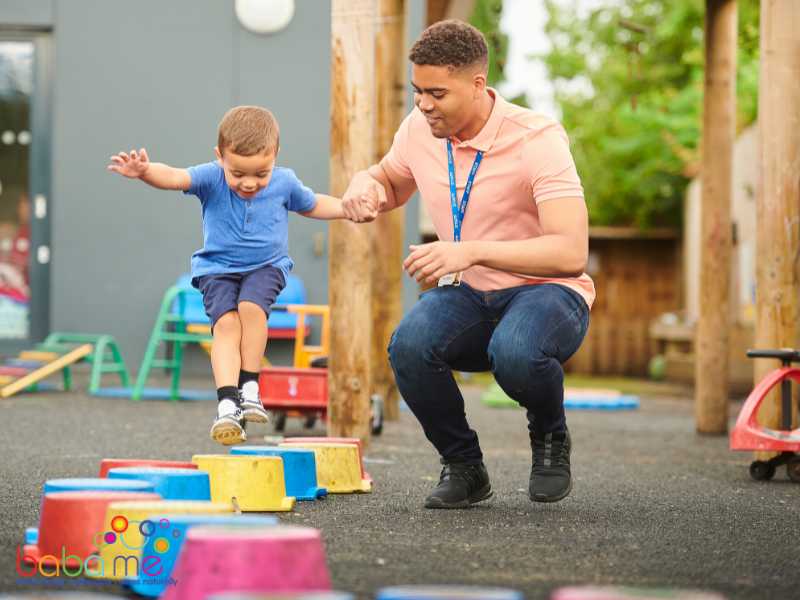
Gross Motor Skills Development in Infants
In the first few months of life, your baby will be developing their gross motor skills through basic movements such as head control and tummy time. Tummy time is an important activity that helps your baby develop the muscles they need to lift their head and eventually roll over.
By around 4-6 months old, your baby should start to show signs of rolling over. Rolling over is an important milestone as it helps your baby develop the muscles they need to crawl and eventually walk. Encouraging your baby to spend time on their tummy and providing plenty of opportunities for rolling over can help support their gross motor skill development.
Around 6-8 months old, your baby may start to sit up on their own. Sitting upright is an important milestone as it helps your baby develop the balance and strength they need to crawl and walk. To support your baby’s gross motor skill development, you can provide plenty of opportunities for them to practice sitting up, such as propping them up with pillows or sitting them in a high chair.
As your baby continues to develop their gross motor skills, they will eventually start crawling and walking. Crawling is an important milestone as it helps your baby develop the muscles they need for walking, running, and jumping. Encouraging your baby to crawl by providing plenty of opportunities for them to explore and move around can help support your child’s gross motor skills.
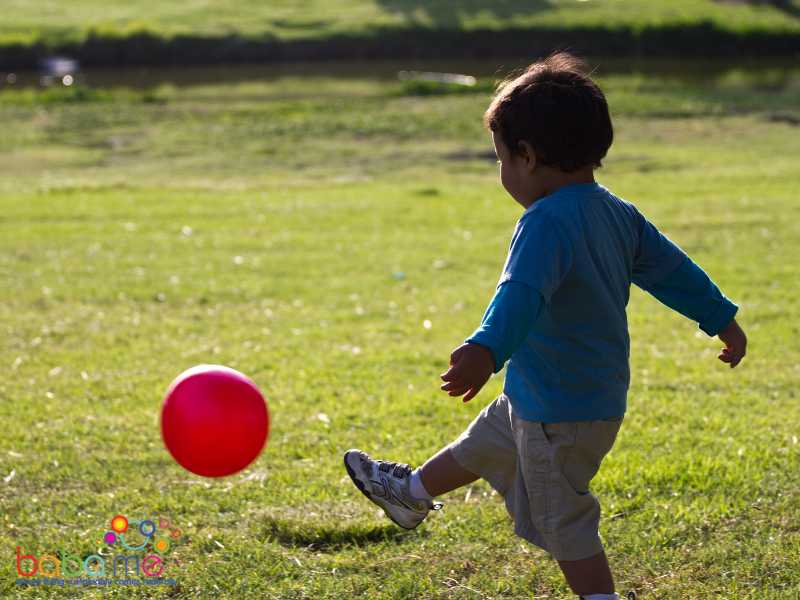
Gross Motor Skills vs. Fine Motor Skills
Gross motor skills and fine motor skills are two fundamental aspects of a child’s physical development. Gross motor skills support movements involving large muscle groups like walking, running, or jumping. For instance, preschoolers’ gross motor skills might be observed when they engage in activities like hopping or balancing.
These skills have their own gross motor development milestones, such as a toddler’s first steps or a child’s ability to skip. Practicing gross motor skills through various gross motor skill activities is essential for building strength and coordination.
Fine motor skills involve smaller movements, typically in the hands and fingers, like buttoning a shirt or holding a pencil. Imagine the role training wheels play in learning to ride a bike: they provide essential support until gross motor skills like balancing are refined.
Gross Motor Skills Development in Toddlers
| Age Range | Gross Motor Milestones |
|---|---|
| Newborn – 2 months | – Moves limbs actively |
| – Startles in response to sudden sounds | |
| 2 – 4 months | – Can hold head up when on stomach (tummy time) |
| – Begins to push up when lying on stomach | |
| 4 – 6 months | – Rolls over (from tummy to back, and vice versa) |
| – Can sit with support | |
| 6 – 9 months | – Begins to sit without support |
| – Starts to crawl or may shuffle on bottom | |
| 9 – 12 months | – Pulls to stand |
| – May take a few steps with support | |
| – Can stand briefly without support | |
| 12 – 18 months | – Begins to walk independently |
| – May walk up steps with assistance | |
| – Can squat and return to standing position | |
| 18 – 24 months | – Runs fairly well |
| – Begins to jump with both feet off the ground | |
| – Can kick a ball | |
| 2 – 3 years | – Can walk up and down stairs using a railing |
| – Begins to pedal a tricycle | |
| – Can stand on one foot for a moment | |
| – Can throw a ball overhand | |
| 3 – 4 years | – Can hop on one foot |
| – Can catch a ball with arms extended | |
| – Can walk up and down stairs without a railing, one foot per step | |
| 4 – 5 years | – Can skip using alternating feet |
| – Can hop on one foot multiple times | |
| – Can balance on one foot for 10 seconds or more | |
| – Can swing and climb on playground equipment |
Gross Motor Skills Examples By Age
Cute Moves of Newbies (0-6 Months):
Flipping from back to belly, and the other way around.
Turning their little head side to side, both while chilling on their back and during tummy adventures.
Pushing up like mini push-up champs during tummy time.
Waving arms and kicking legs while lying down, like they’re dancing in their dreams.
Lifting their head like curious explorers when you help them sit.
Enjoying tummy time like it’s the best chill-out zone.
Playfully bringing toes to mouth, maybe thinking they’re toys!
Little Explorers (6-12 Months):
Sitting up solo, looking all grown-up.
Grabbing toys and stuff while seated, because everything is interesting.
Changing positions – mastering the art of the sit-lie-sit shuffle.
Belly-crawling adventures.
Progressing from creeping to all-fours crawling.
Pulling up to stand tall.
Standing solo for those ‘Look, no hands!’ moments.
Taking assisted walks and maybe a few daring solo steps.
One-Year-Old Whirlwinds:
Squatting down to snatch toys or treasures.
Standing tall without any helping hand.
Walking like it’s their favorite thing.
Multi-tasking with walking and holding onto toys.
Climbing stairs, sometimes needing a little hand or rail.
Gliding down stairs in their fun, belly-first style.
Running around, but oops! They still might tumble.
Sitting on pint-sized stuff.
Conquering bigger things and then plopping down to sit.
Terrific Two-Year-Olds:
Walking and running like little champs.
Zoom stopping and starting during play.
Mastering stairs like a boss.
Jumping with joy and both feet together.
Kicking balls and feeling proud.
Discovering the joy of throwing.
Standing tall on tippy toes.
Three-Year-Old Dynamos:
Balancing acts on one foot, even if it’s just for a moment.
Walking backward and sideways, because why not?
Little leaps forward.
Tricycling around the block.
Catching balls, though with a stiff-arm strategy.
Standing on one leg, looking like tiny flamingos.
Four-Year-Old Firecrackers:
Stair-climbing experts.
Running, jumping, and climbing like mini ninjas.
Hop, skip, and a hop again on one foot.
Ball-catching antics.
Playground climbing adventures.
Tiptoeing around, being all sneaky or balletic.
Zigzagging around things in their way.
Fantastic Five-Year-Olds:
Skipping merrily and trying out galloping.
Getting a hang of jumping ropes.
Balancing walks on narrow paths.
Biking around, sometimes even without those training wheels.
Trying out swimming, dancing, and even skating.
Ball games galore!
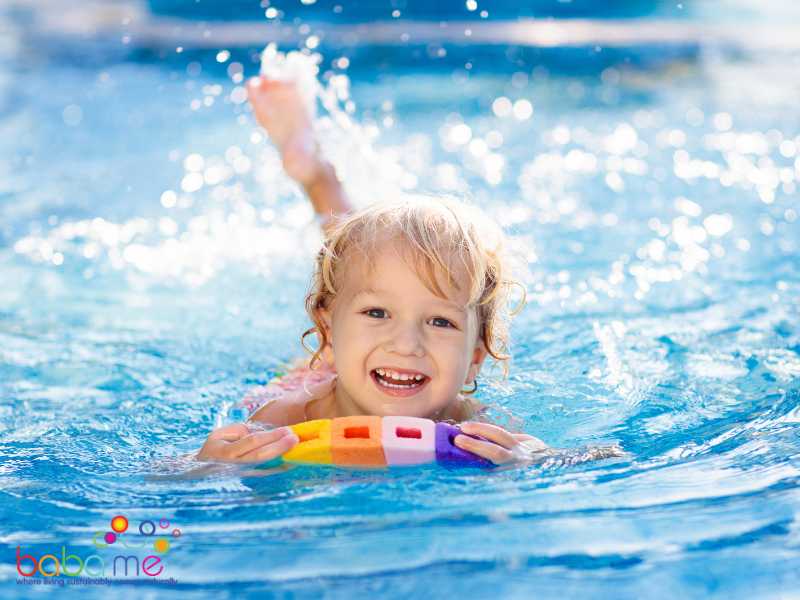
How to help your child develop gross motor skills?
Helping children develop their gross motor skills can be both fun and educational. Here are some strategies:
Play Outside: Encourage activities like running, jumping, or playing ball games.
Obstacle Courses: Set up safe obstacles at home or in a park that they can crawl under, jump over, or climb through.
Dance: Dancing is not only fun but also excellent for coordination and rhythm.
Ride a Bike: Start with training wheels and gradually move to a two-wheeler to enhance balance.
Swimming: This is a full-body exercise and is great for muscle development and coordination.
Organized Sports: Engaging in team sports can help refine various gross motor skills.
Playground Visits: Playgrounds offer a range of equipment that encourages climbing, sliding, and swinging.
Regular Exercise: Ensure your child gets daily physical activity, even simple things like walking or playing catch.
Limit Screen Time: Encourage more active play rather than passive activities.
Seek Professional Help: If a child exhibits a gross motor skill delay, it might be indicative of developmental coordination disorder. In such cases, consulting a pediatric physical therapist specializing in a child’s gross motor skills is advisable. This expert can offer tailored exercises and guidance to help support gross motor skills in children to meet their gross motor milestones.
Toys to Help Develop Gross Motor Skills
Radio Flyer Push & Play Walker
The Radio Flyer Classic Push & Play Walker is a great investment for parents who want a safe, sturdy and versatile push walker for their toddler.

What We Loved
- The sensory activities encourage imaginative play and help develop fine and gross motor skills.
- Safety Resist Clickers provide resistance when the wagon is pushed to hold steady for beginning walkers.
- Built-in rear storage lets your child bring their favorite toys along for the ride.
What We Didn’t Like
- Some users reported difficulty assembling the walker.
- The walker may be a bit heavy for some toddlers to maneuver.
- A few parents reported that the wheels may be a bit noisy on hard floors.
Lovevery Play Gym – Best Play Mat Overall
The Ultimate Developmental Gym for Your Little One
Unlock a world of developmental wonders with the Lovevery Play Gym! Expertly crafted for every stage, it’s the ultimate playground for your baby’s mind and body.
From Montessori-inspired zones to stage-based learning accessories, every detail is crafted for your little one’s growth and enjoyment. Dive into a world where play meets learning, and watch your baby thrive!
Pros
- The Lovevery Play Gym is designed to provide your baby with a comprehensive range of developmental activities that will help them reach their full potential.
- Stages of development: With five different development zones, the Lovevery Play Gym is designed to grow with your baby, from tummy time to sitting up and beyond.
- Made from sustainably-sourced wood and organic cotton, the Lovevery Play Gym is as eco-friendly as it is baby-friendly.
- Easy setup: With a simple, tool-free assembly, you can have your Lovevery Play Gym ready to go in minutes
- Play guide included: The Lovevery Play Gym comes with a play guide that provides you with tips and activities to help you make the most of your baby’s playtime.
Cons
- The Lovevery Play Gym is one of the more expensive options on the market, but the high-quality materials and comprehensive development make it worth the investment.
- Some parents have noted that the Lovevery Play Gym is quite large.
- The Lovevery Play Gym is only available in one color scheme, so if you’re looking for something specific, you may need to look elsewhere.
FAQS on Gross Motor Skills
What are the 5 gross motor skills?
Gross motor skills involve the large muscles of the body and are crucial for major body movement such as walking, maintaining balance, coordination, and reaching. Here are five fundamental gross motor skills:
Walking: The ability to move from one place to another on two legs.
Jumping: This skill requires both power and coordination to lift the body off the ground.
Running: An extension of walking, it requires a more rapid pace and better balance.
Throwing: Engaging the upper body muscles to send an object flying, like a ball.
Climbing: Using both arms and legs to ascend or traverse objects or structures.
What are gross motor skills in early childhood?
In early childhood, gross motor skills are the abilities that enable children to make larger movements with their arms, legs, feet, or entire body. Such movements are crucial for exploring their environment, playing with peers, and building physical strength and endurance. Activities that involve running, hopping, throwing, and jumping are typical examples.
As children progress through early childhood, they refine these skills, which are pivotal for their physical development, self-confidence, and participation in group activities. There are many ways to naturally improve motor skills, however aids such as a wooden baby walker or push toys can also help when used in moderation.

